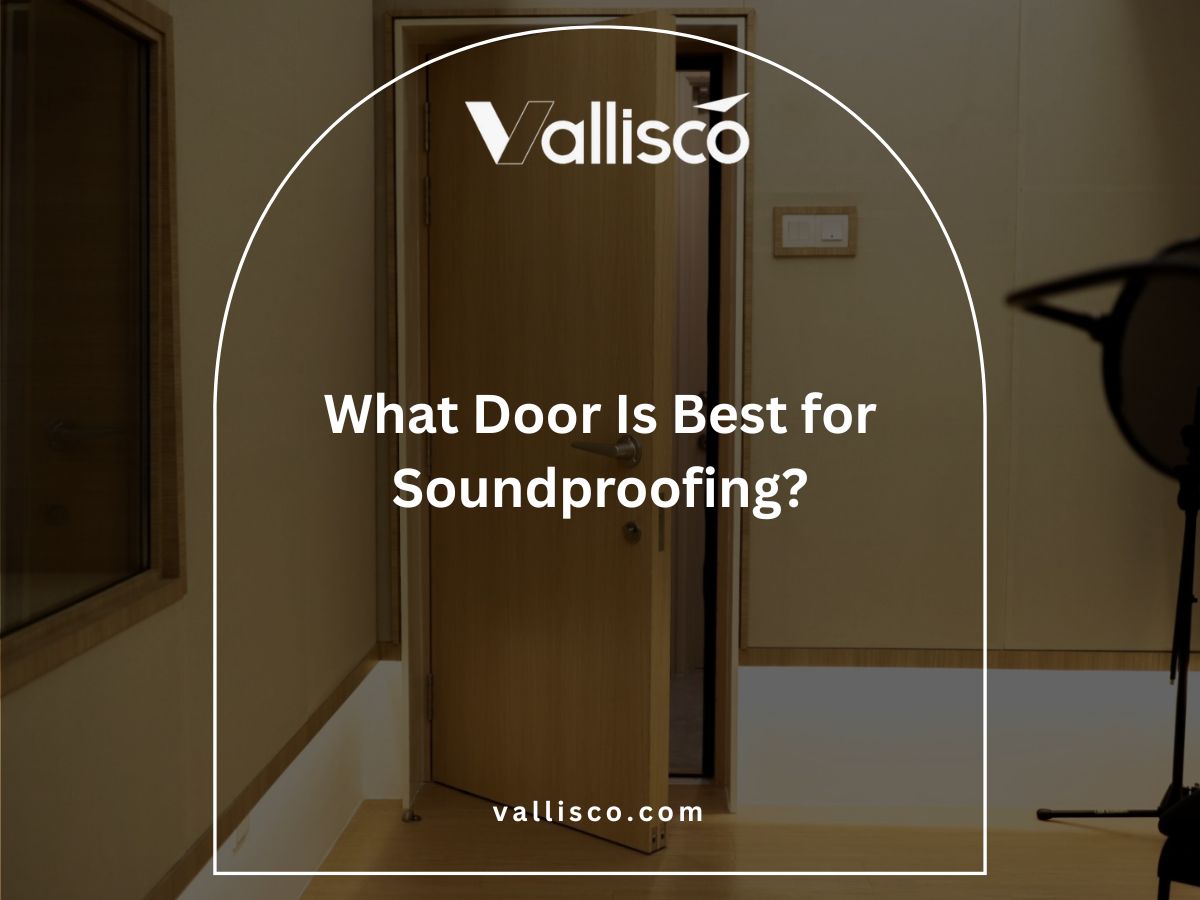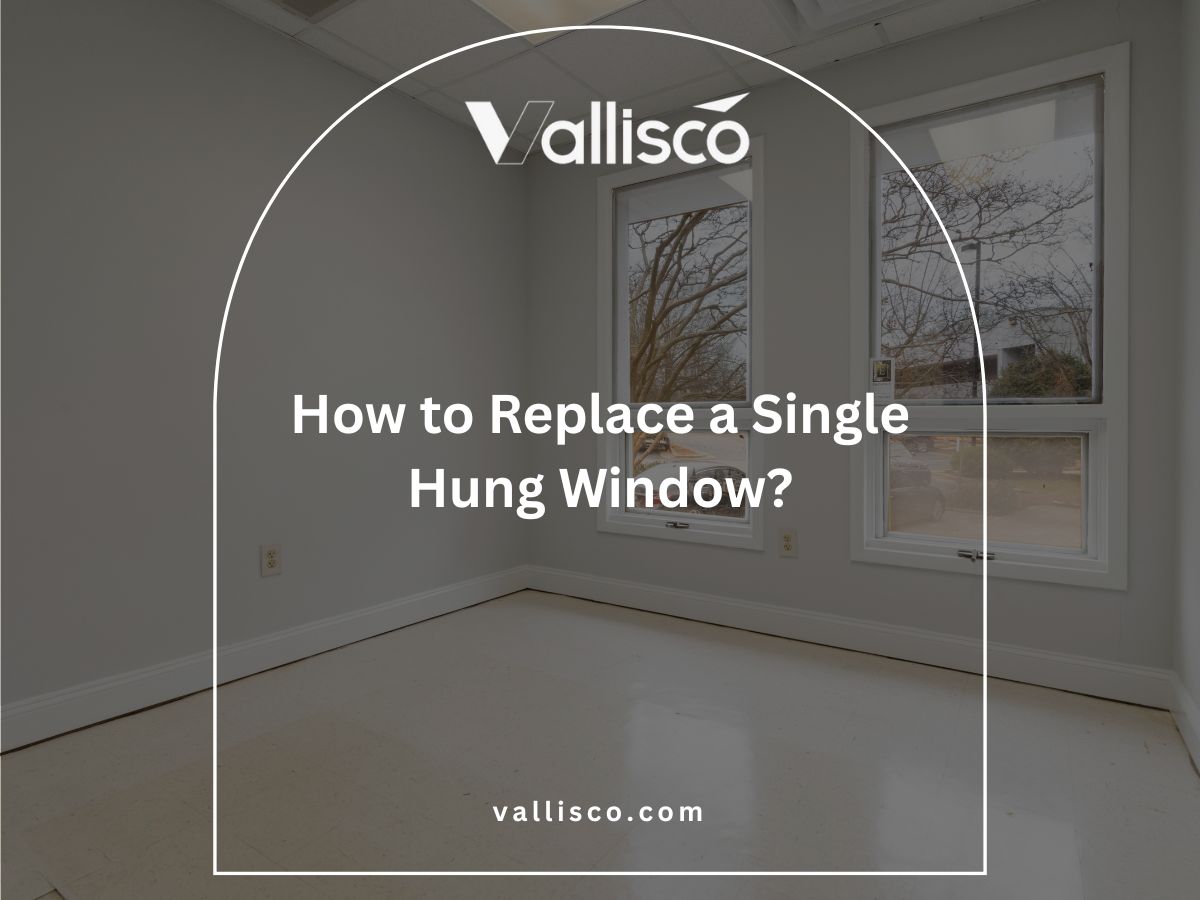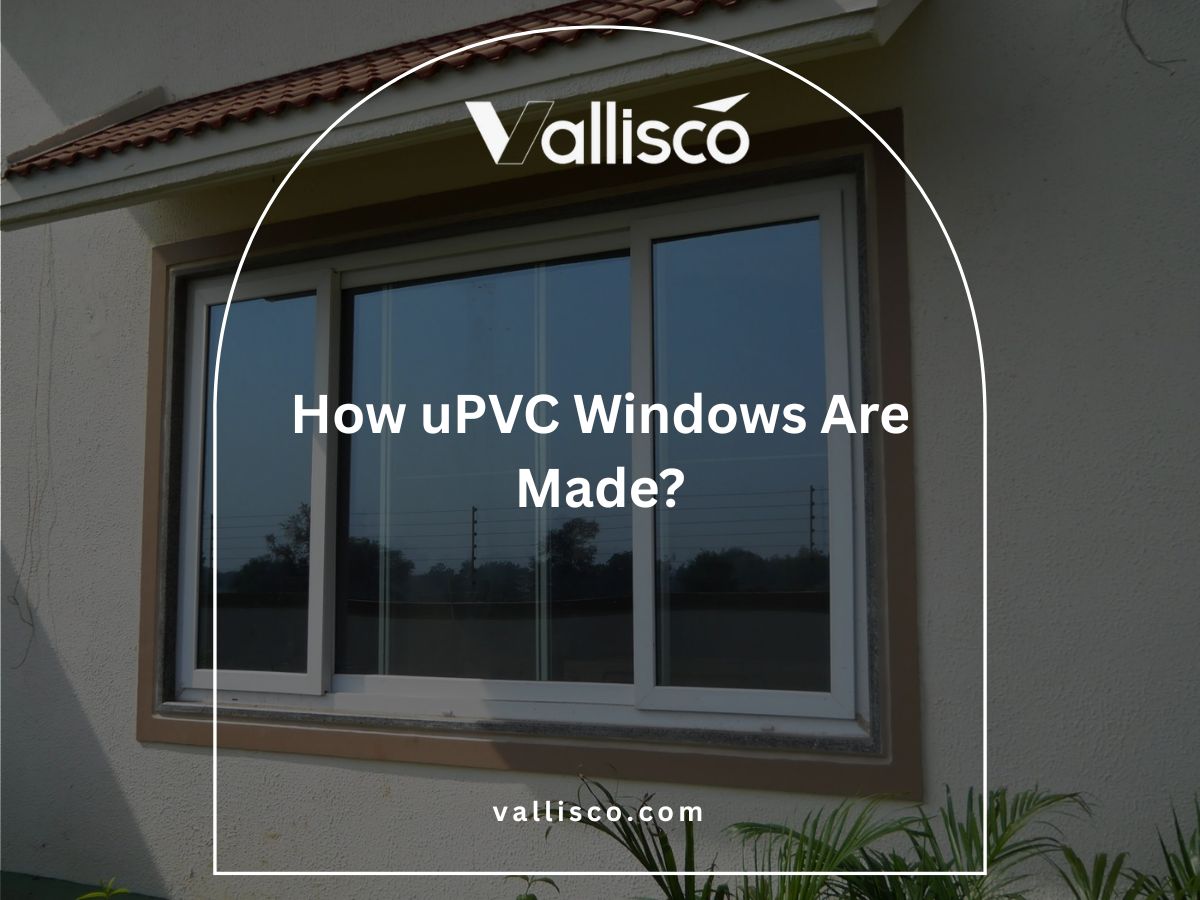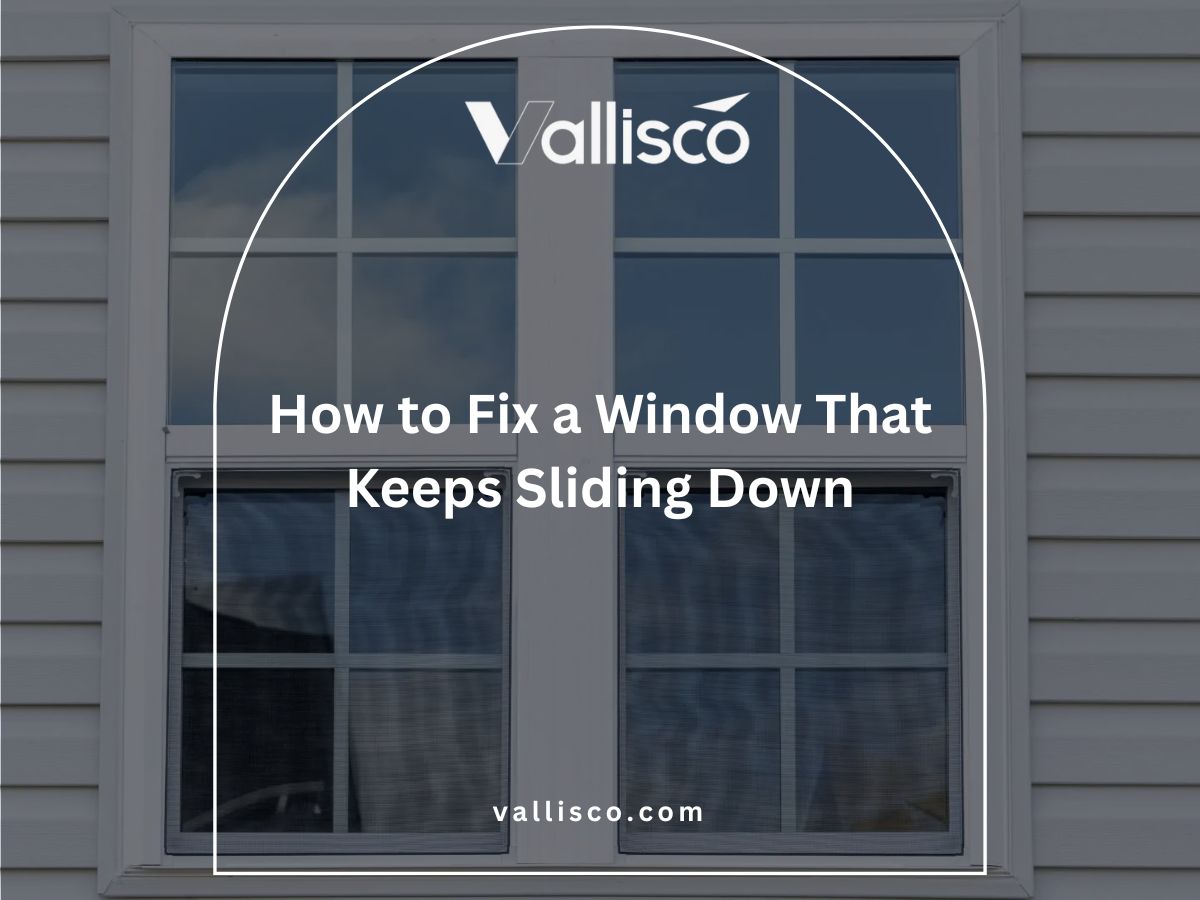Picking the right door for a villa is not as simple as it first appears. A door may look perfect in a catalog or showroom, but once it is installed, it can feel completely out of place if it doesn’t match the architecture, climate, or purpose of the home.
Villas with stone façades, arched openings, or modern glass lines each call for very different designs.
Over the years, I’ve seen owners choose doors that looked impressive on their own but clashed with the character of the villa.
These mismatches are more common than you might think, and they often lead to regret. A villa door needs to balance beauty, practicality, and long-term performance not just first impressions.
That’s why this guide highlights 10 types of villa door designs, each with its own character and strengths. If you’re comparing options or feeling uncertain, this breakdown will help you see which styles truly fit.
By the end, you’ll have ideas that not only look good but also feel right every time you walk through the door.
Let’s dive in!
Quick Comparison Chart
Before we dive into each door style, here’s a quick snapshot of what you’ll find. If you’re short on time or just want a bird’s-eye view, this table will give you a feel for what makes each option stand out.
| Door Type | Key Material(s) | Style Vibe | Special Feature | Not Ideal | Best For |
| Grand Double Doors with Carving | Solid wood (mahogany, oak) | Bold & classic | Detailed carvings and wide opening | Small entryways where scale may overwhelm | Formal, traditional entrances |
| Modern Pivot Doors | Wood, metal, glass | Sleek & bold | Rotates on central pivot hinge | Poor fit for very traditional or ornate facades | Minimalist, wide entryways |
| Glass & Steel French Doors | Glass + steel | Light & timeless | Natural light, multiple panes | Homes needing high privacy without window coverings | Garden or interior transitions |
| Rustic Wood Doors with Ironwork | Solid wood + iron | Earthy & strong | Studs, grilles, and old-world feel | Modern villas with minimalistic designs | Stone or countryside villas |
| Sliding Glass Patio Doors | Glass + aluminum/uPVC | Bright & open | Space-saving and easy to use | Cold climates without insulated glass | Patios, small living spaces |
| Arched Entry Doors | Wood or steel | Soft & graceful | Curved shape adds character | Modern architecture with sharp, angular lines | Mediterranean or traditional facades |
| Contemporary Flush Doors | Veneer, laminate, wood | Clean & quiet | Flat surface with no panels | Ornate or heavily decorated entrances | Modern interiors or minimalist homes |
| Teak Doors with Custom Carvings | Solid teak | Warm & cultural | Carved family symbols or patterns | Budget projects with tight timelines | Personalized or heritage design |
| Aluminum Woodgrain Doors | Aluminum with woodgrain | Smart & simple | Wood look, metal performance | Owners wanting the feel of real wood | Coastal or low-maintenance homes |
| Bi-Fold Doors for Courtyards/Pools | Glass + aluminum/wood | Open & breezy | Folds completely to the side | Spaces with limited clearance for panel stacking | Indoor-outdoor flow |
Ready to dig deeper? Let’s walk through each type one by one and see what really fits your villa.
1. Grand Double Doors with Carved Wood Panels
Grand double doors have a presence that instantly sets them apart. The height, the carved panels, and the natural grain give an entrance a sense of weight and importance. Walk up to a villa with these doors and you feel it before you even touch the handle: a balance of craftsmanship and tradition that commands attention.
Key Design Features
- Solid Hardwood Construction: Built from dense woods like mahogany or oak. The material gives the door strength and a substantial feel.
- Decorative Carved Panels: Patterns may be floral, geometric, or inspired by heritage designs. Carvings add depth and bring character to the surface.
- Sidelights or Transom Window: Narrow glass panels or a window above the door brighten the entry. They soften the heavy look and add visual balance.
Best Fit For
- Mediterranean or Colonial Villas: Works well with façades that feature textured stone, brick, or classical details.
- Wide Entryways: Looks best in spaces that can handle the scale of a double door.
- Covered Porches: Performs better when protected from harsh weather exposure.
Pros
- Strong First Impression: Creates a welcoming focal point that guests notice immediately.
- Long-Lasting Build: Solid hardwood, when maintained, can perform well for decades.
- Architectural Harmony: Complements traditional and warm villa designs seamlessly.
Cons
- Heavy Weight: Puts stress on hinges and requires reinforced hardware.
- Space Requirement: May overpower smaller entrances or narrow façades.
- Regular Maintenance: Needs sealing or varnishing to withstand sun and rain.
Installation and Maintenance Tips
- Use High-Quality Hinges: Strong hardware prevents sagging and keeps the door aligned.
- Apply Protective Finish: A fresh sealant each year helps avoid warping and cracking.
- Select Suitable Wood: Teak or mahogany are better choices in humid climates because of their resistance to moisture.
Final Thoughts
Grand double doors with carved panels bring drama and tradition to a villa’s entrance. They work beautifully when matched with the right architectural style and setting. However, in modern or minimalist villas, their ornate look can feel misplaced. Choosing carefully makes the difference between a door that feels overpowering and one that feels like it truly belongs.
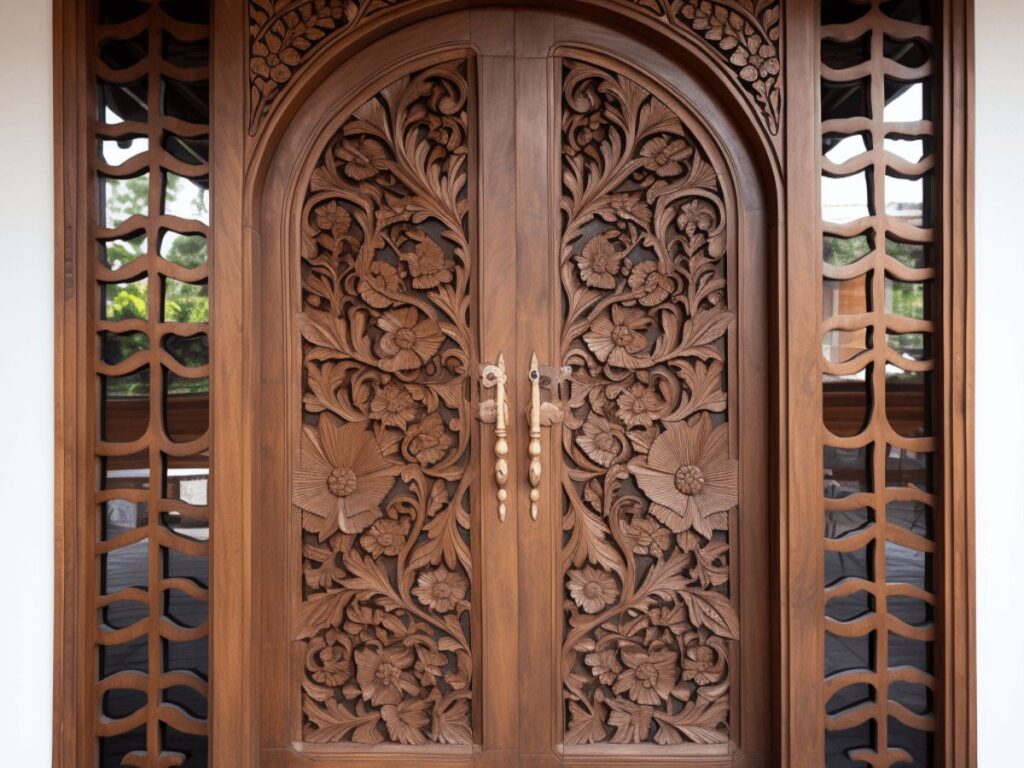
2. Modern Pivot Doors
A pivot door doesn’t open the way most people expect. Instead of swinging on side hinges, it rotates smoothly on a pivot point set at the top and bottom. That small change in mechanics makes a big difference in how the entrance looks and feels. Walk through one and you notice it immediately: the door seems lighter, even when the panel is oversized. For villas, that combination of strength and elegance is hard to miss.
Key Design Features
- Pivot Hinge Mechanism: The door turns on a central pivot rather than side hinges. This setup supports wider and taller panels without putting stress on the frame.
- Minimalist Panel Style: Often features smooth wood veneers, subtle grains, or glass insets. The effect is sleek and contemporary.
- Customizable Dimensions: Can be built larger than standard doors. This makes them ideal for bold, oversized entrances.
Best Fit For
- Modern or Contemporary Villas: Works naturally with clean lines and uncluttered spaces. The style feels at home in open layouts.
- High-Ceiling Entrances: Balances tall façades with proportionate scale. The size doesn’t overwhelm the architecture.
- Transitional Designs: Fits villas that mix traditional structures with modern finishes. It bridges both styles effectively.
Pros
- Striking Visual Impact: The pivot motion is unexpected and elegant. It immediately sets the door apart from conventional options.
- Larger Design Possibilities: Supports big, dramatic panels without warping. Great for statement entrances.
- Flexible Material Options: Available in wood, glass, steel, or composite. You can adapt the look to match the villa’s design.
Cons
- Specialized Installation: Needs precise framing and professional setup. Poor alignment can affect smooth movement.
- Higher Hardware Cost: Pivot systems are more expensive than standard hinges. They require strong, durable hardware.
- Air and Water Sealing Challenges: The design may need extra sealing for exposed locations. Without it, drafts or leaks can occur.
Installation and Maintenance Tips
- Hire Experienced Installers: Professionals familiar with pivot systems prevent alignment issues. Their expertise ensures long-term performance.
- Choose Durable Hardware: Invest in stainless steel or high-grade aluminum pivot sets. Quality parts handle the weight better.
- Check Seals Regularly: Inspect thresholds and weatherstripping twice a year. Replace worn parts before problems grow.
Final Thoughts
Pivot doors offer a mix of simplicity and drama that few other designs can match. They create a strong first impression while staying practical for daily use. However, their performance depends heavily on expert installation, making professional support just as important as the door itself.
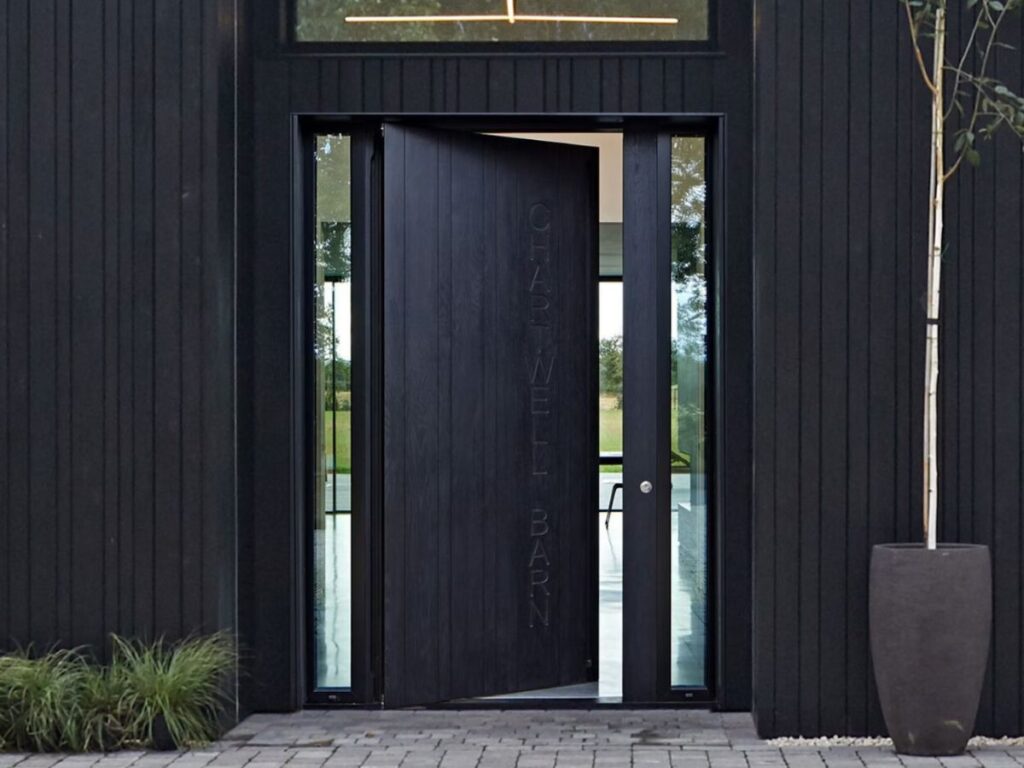
3. Glass & Steel French Doors
Glass and steel French doors bring light and structure together in a way few designs can. The slim steel frames divide wide glass panels into clean patterns, almost like artwork. Even when closed, they keep spaces open and bright, while the steel adds a sense of strength that wood alone can’t always deliver. In villas, this style often becomes the bridge between indoor comfort and outdoor scenery.
Key Design Features
- Narrow Steel Profiles: Slim frames support wide glass sections without blocking the view. The result is stability without sacrificing openness.
- Grid-Style Glass Layout: Rectangular or square panes create symmetry and rhythm. This layout gives the doors a timeless, architectural feel.
- Double or Single Door Options: Can swing from one side or both depending on the layout. This flexibility makes them suitable for different spaces.
Best Fit For
- Villas With Scenic Views: Frames natural surroundings like gardens or coastlines. The glass panels act as windows and doors in one.
- Blended Architectural Styles: Works in villas that mix traditional and modern elements. The steel and glass balance old and new seamlessly.
- Spaces Needing Extra Light: Ideal for darker interiors that benefit from more daylight. The large panes open up enclosed rooms.
Pros
- Brightens Interiors: Maximizes natural light and reduces dependence on artificial lighting. Creates a more welcoming environment.
- Strong Structural Integrity: Steel holds up under heavy use and supports large glass panels. Provides long-term reliability.
- Versatile Style: Fits a wide range of villa designs. Adapts well to both modern and classic exteriors.
Cons
- Higher Price Tag: Quality steel and glass can cost more than wood. The initial investment may be significant.
- Potential for Rust: In humid climates, untreated steel may corrode. A protective finish is essential.
- Cleaning Demands: Multiple panes require more upkeep. Dirt and smudges show quickly on glass.
Installation and Maintenance Tips
- Select Quality Coatings: Powder coating extends the life of steel frames. It also helps resist moisture and wear.
- Opt for Insulated Glass: Double or triple glazing improves comfort and energy efficiency. It also reduces exterior noise.
- Schedule Annual Checkups: Inspect locks, hinges, and seals once a year. Addressing small issues early prevents bigger problems.
Final Thoughts
Glass and steel French doors are a way to connect indoor living with outdoor views while adding strength and elegance. However, their value is highest when the grid layout, glass type, and finish align with the villa’s overall design. With careful planning, they can be one of the most rewarding design choices for a property.
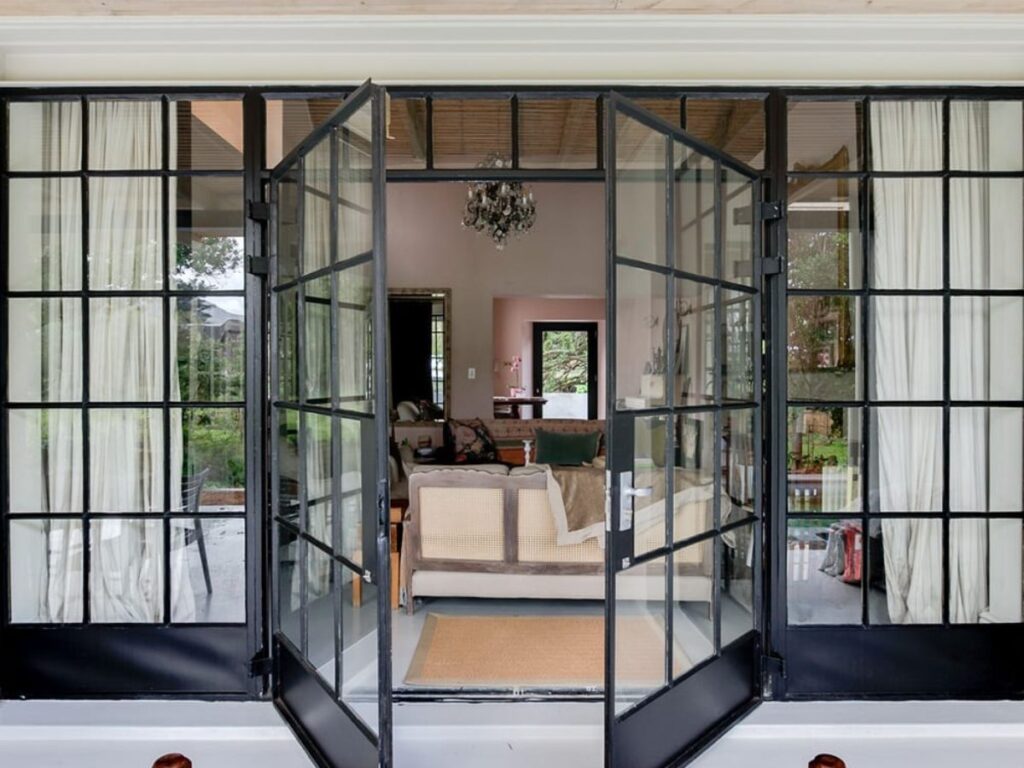
4. Rustic Solid Wood Doors with Ironwork
There’s something about rustic solid wood paired with iron that instantly feels established. The wood’s natural grain gives depth and warmth, while hand-forged iron details add character and strength. Hinges, handles, and decorative grilles are not just functional pieces they complete the look, turning a simple door into part of the villa’s overall presence. The result is an entrance that feels both welcoming and enduring.
Key Design Features
- Solid Wood Construction: Built from hardwoods like oak or walnut for durability and weight. The grain and texture add natural beauty that grows richer with time.
- Decorative Iron Accents: Includes grilles, straps, studs, or scrollwork. These touches create a handcrafted look and elevate the design.
- Hand-Forged Hardware: Often uses custom-made handles, hinges, and locks. The finish may be polished, matte, or aged for different effects.
Best Fit For
- Villas in Natural Settings: Works beautifully in rural, mountain, or coastal landscapes. The natural materials blend into these environments with ease.
- Traditional or Rustic Architecture: Complements stone, brick, or timber-framed villas. The textures align with the home’s design language.
- Grand or Cozy Entrances: Looks just as fitting on large arched doorways as on smaller entries. The style adapts well to both scales.
Pros
- Distinctive Appearance: The mix of wood and iron makes a strong impression. Visitors notice the craftsmanship immediately.
- Long-Lasting Materials: Hardwood and iron can serve for decades with proper care. The finish gains more character as the years pass.
- Security Benefits: Heavy wood combined with reinforced ironwork adds strength. This makes the entrance more difficult to breach.
Cons
- Regular Upkeep: Wood requires sealing and iron needs rust prevention. Without this, both materials lose their charm quickly.
- Higher Weight: The combination demands strong hinges and framing. This may increase installation costs.
- Climate Sensitivity: In humid or rainy regions, moisture management is essential. Otherwise, warping and corrosion can occur.
Installation and Maintenance Tips
- Use Weather-Resistant Finishes: Apply protective sealants at least once a year. This preserves both the wood and iron.
- Inspect Ironwork Frequently: Watch for rust or loose fittings. Early attention keeps the door safe and attractive.
- Choose Skilled Craftsmanship: Partner with artisans experienced in blending wood and metal. Proper workmanship avoids long-term problems.
Final Thoughts
Rustic solid wood doors with ironwork bring texture, strength, and history to a villa’s entry. They stand out as more than just functional pieces; they become part of the home’s character. However, they demand steady care, and that commitment is what keeps their charm alive for years to come.
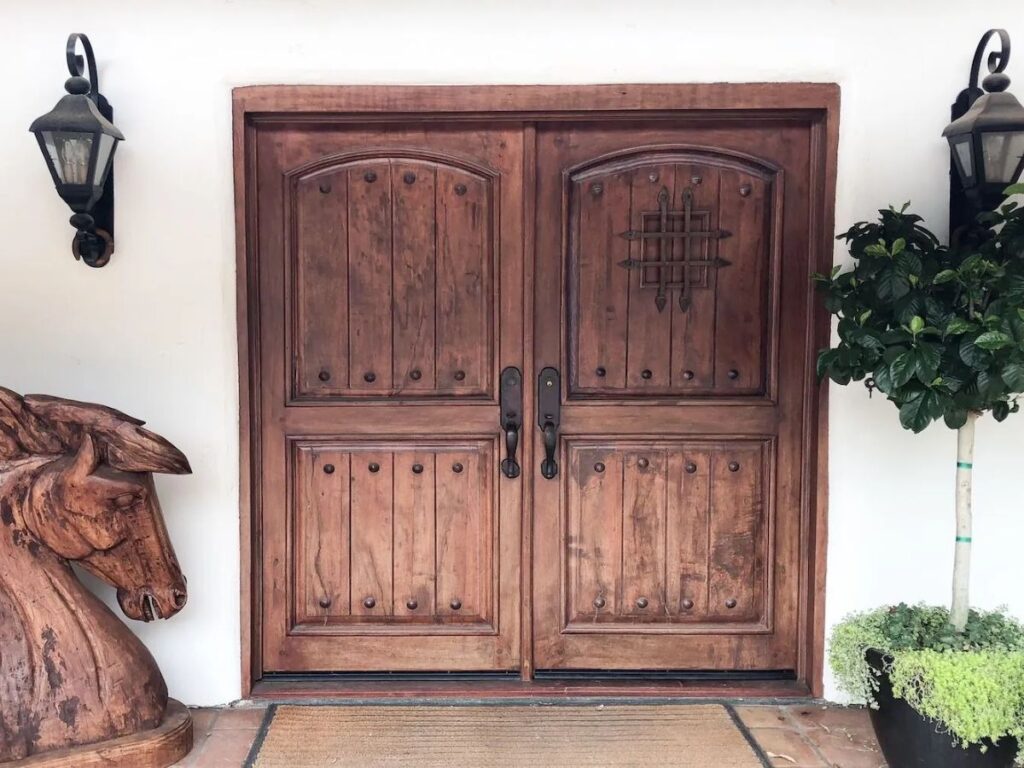
5. Sliding Glass Doors for Patios
Sliding glass doors are one of the most effective ways to connect a villa’s interior with its outdoor spaces. Instead of acting as a barrier, they extend the room visually and physically, giving you an uninterrupted view of the courtyard, pool, or garden. The smooth sliding motion makes them easy to operate every day, and the wide glass panels create a sense of openness that swinging doors often can’t provide.
Key Design Features
- Large Glass Panels: Wide panes maximize visibility to outdoor areas. This design brings the outside in and makes rooms feel more expansive.
- Sliding Track System: Panels move horizontally along tracks for smooth operation. This layout saves space compared to doors that swing open.
- Framing Options: Frames are available in aluminum, vinyl, or wood-clad designs. Each offers different levels of durability, energy efficiency, and visual appeal.
Best Fit For
- Villas With Outdoor Living Areas: Perfect for patios, poolside spaces, and gardens. Creates seamless transitions during gatherings or quiet evenings.
- Modern or Open-Plan Homes: Works well where natural light and openness are priorities. Complements clean, contemporary layouts.
- Warm or Mild Climates: Ideal for regions that allow year-round or seasonal open-air living. Keeps interiors connected to outdoor spaces.
Pros
- Expands Visual Space: Extends the sightline and makes interiors appear larger. Smaller villas especially benefit from this effect.
- Improved Natural Light: Brightens living spaces and reduces reliance on artificial lighting. Daytime energy use can be minimized.
- Space-Saving Design: Sliding function keeps doors flush with the wall. Useful for furnished patios or tighter floor plans.
Cons
- Cleaning Effort: Glass shows fingerprints, smudges, and dirt easily. Frequent cleaning is necessary to maintain clarity.
- Track Maintenance: Tracks can collect dust or debris, affecting movement. Neglect can lead to sticking or uneven sliding.
- Heat Transfer: Single-pane versions don’t insulate well. Upgraded glazing is often required in cooler or hotter climates.
Installation and Maintenance Tips
- Select Quality Rollers: High-grade rollers prevent sticking and extend door life. Low-quality parts wear out quickly in daily use.
- Opt for Double Glazing: Insulated glass improves energy efficiency and comfort. It also reduces noise from outside.
- Keep Tracks Clean: Regular vacuuming and wiping prevent buildup in the track. A clean system keeps the panels gliding smoothly.
Final Thoughts
Sliding glass doors create a bright, open connection between villas and their outdoor surroundings. However, performance depends on choosing the right frame and glazing for your location and lifestyle. Vallisco can walk you through material and design choices so you end up with doors that look good, function reliably, and last for years.
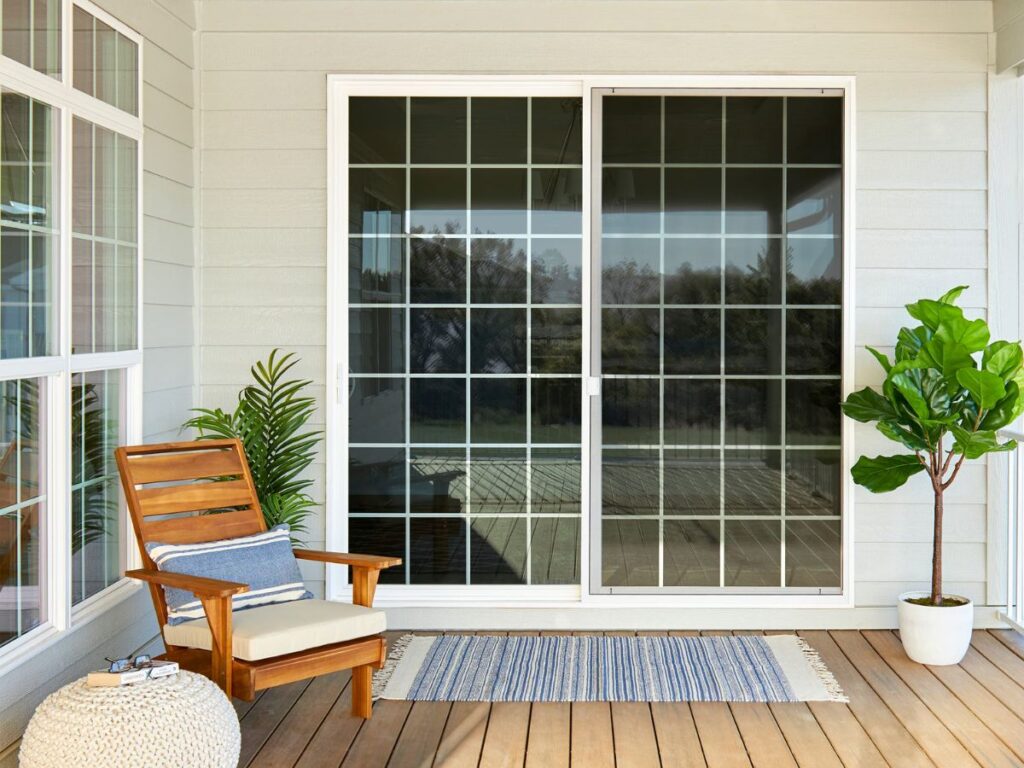
6. Arched Entry Doors
An arched doorway changes the way a villa feels the moment you see it. The curve softens the entry, making it look taller and more welcoming at the same time. This design isn’t just about looks—it carries a sense of tradition and balance that works in both historic villas and modern builds that want a touch of elegance.
Key Design Features
- Curved Top Frame: The rounded arch above the door softens sharp lines. It also adds extra height to the entrance.
- Custom Fit Construction: Built to exact measurements since the shape is unusual. This precision makes it blend seamlessly with the villa’s façade.
- Material Variety: Options include wood, steel, or fiberglass. The choice affects durability, style, and upkeep needs.
Best Fit For
- Mediterranean and Classical Villas: Matches stone, stucco, or brick finishes beautifully. The arch complements the timeless look of these designs.
- Grand Entrances: Ideal for wide façades and tall ceilings. The scale makes the curve stand out.
- Accent Architecture: Works with villas that already have arched windows or verandas. The repetition creates unity across the exterior.
Pros
- Architectural Interest: Adds character and instantly draws attention. It makes the entrance feel intentional instead of standard.
- Design Versatility: Can be paired with glass panels, carvings, or decorative hardware. This gives room for customization.
- Enhanced Height Perception: Creates the impression of a taller entryway. This can help smaller villas look more expansive.
Cons
- Custom Work Costs: Requires specialized framing and construction. This usually increases the price compared to standard shapes.
- Limited Replacement Options: Ready-made replacements are rare. Most will need to be ordered custom.
- Weatherproofing Challenges: The curved design can make sealing against drafts or rain more difficult.
Installation and Maintenance Tips
- Work With Skilled Carpenters: Proper alignment of the curve prevents gaps and keeps the door functional. Poor craftsmanship leads to long-term issues.
- Choose Durable Materials: Select wood or steel that holds up to your local climate. This prevents warping, swelling, or rust.
- Inspect Seals Regularly: Pay close attention to the curved top and corners. Early fixes prevent bigger repair costs later.
Final Thoughts
Arched entry doors bring elegance and softness to a villa’s exterior. They make an entrance feel welcoming and memorable, while also blending tradition with function. However, they shine most when the curve complements other shapes in the architecture, tying the entire design together into a unified look.
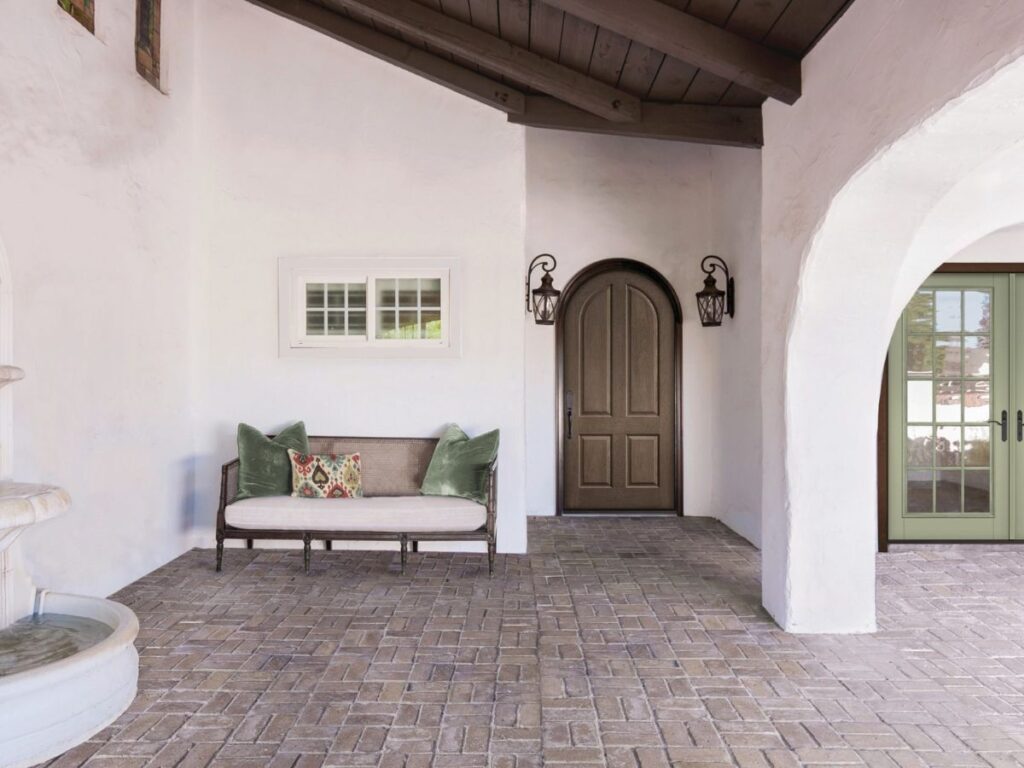
7. Contemporary Flush Doors
Contemporary flush doors are often chosen by villa owners who prefer simplicity. Unlike traditional designs with raised panels or carvings, these doors sit flat and blend into the wall. That smooth surface makes them part of the architecture instead of standing out as a separate feature. The result is a clean, modern look that doesn’t compete with other design elements nearby.
Key Design Features
- Flat, Unembellished Surface: A plain exterior with no raised panels or moldings. This highlights a minimalist style and gives the door a quiet presence.
- Variety of Finishes: Available in wood veneer, laminate, or painted options. Each finish changes how the door feels in the space.
- Concealed Hardware: Hinges and handles are designed to be discreet. This helps the surface remain smooth and uninterrupted.
Best Fit For
- Modern and Minimalist Villas: Complements clean-lined designs where simplicity is valued. The door feels natural in uncluttered spaces.
- Urban Residences: Works in settings where owners want sophistication without bold decoration. The design feels sleek but not showy.
- Integrated Wall Designs: Ideal when the door is meant to disappear into the wall. This creates a seamless flow across surfaces.
Pros
- Streamlined Appearance: Creates a calm and organized façade. The look is clear and intentional.
- Flexible Material Choices: Can be built with wood, composite, or metal. This makes it adaptable for different project needs.
- Easy Cleaning: With no grooves or carvings, dust and dirt wipe away quickly. Maintenance is straightforward.
Cons
- Less Decorative Impact: Doesn’t provide the drama of carved or paneled doors. It may feel too plain in ornate settings.
- Surface Wear Visibility: Scratches and dents are more noticeable on flat finishes. Restoring the look often requires refinishing.
- Potential for Plainness: Without the right context, the door can feel underwhelming. It works best as part of a well-planned design.
Installation and Maintenance Tips
- Choose Quality Core Materials: Solid-core doors are stronger and provide better sound insulation. Hollow-core versions feel lighter but are less durable.
- Match Surrounding Colors: Coordinating door and wall colors strengthens the seamless effect. Contrast can be used, but it shifts the style completely.
- Maintain Finish Regularly: Veneers and painted surfaces should be refreshed over time. This keeps the look crisp and professional.
Final Thoughts
Contemporary flush doors offer quiet strength for villa entrances. They don’t shout for attention, but they bring order and calm to spaces that value simplicity. However, their effect depends on the home’s design when paired with the right architecture, they become part of a polished, intentional whole.
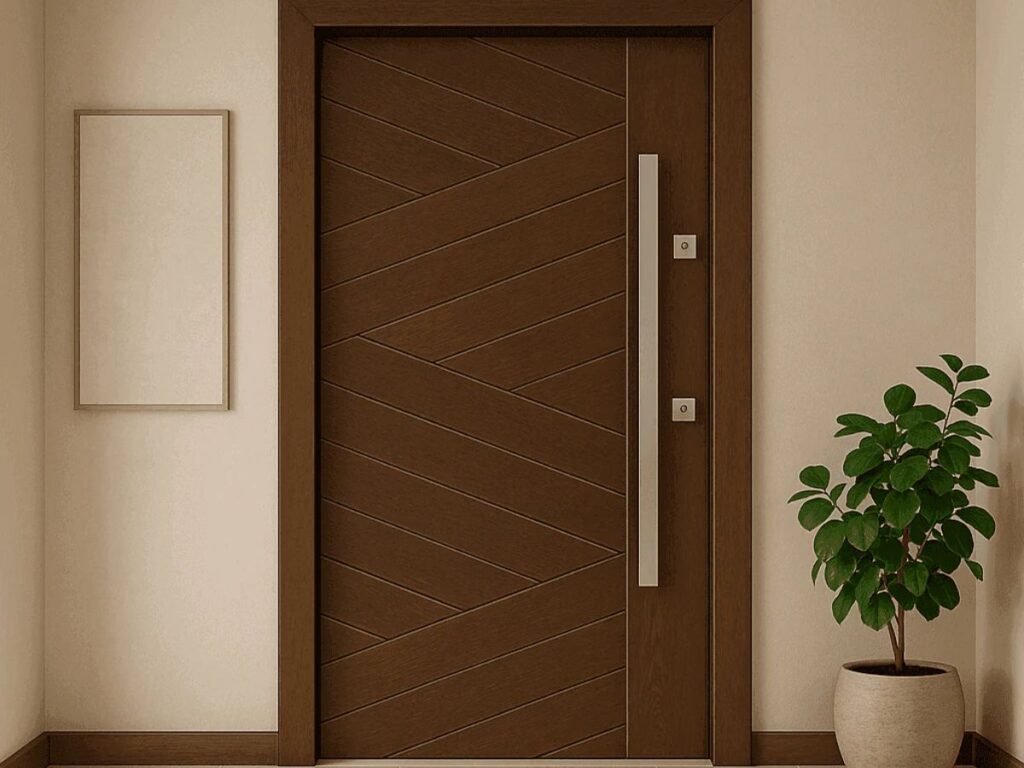
8. Teak Doors with Custom Carvings or Crests
A teak door has a presence that feels different from other materials. The color is warm, the grain is natural, and the weight gives it substance. Add a carving or a crest, and it becomes more than an entrance it becomes a statement that reflects the identity of the villa. Whether it’s a family emblem or a traditional motif, the detail makes the door feel like part of the story of the home.
Key Design Features
- Premium Teak Wood: Contains natural oils that protect it from rot and insects. Over time, the color deepens, adding richness and depth.
- Custom Carvings or Crests: Can include personal symbols, botanical patterns, or heritage-inspired designs. Each carving highlights the owner’s taste and vision.
- Handcrafted Detailing: Shaped and finished by artisans rather than machines. This hands-on process gives every door individuality.
Best Fit For
- Villas in Humid or Coastal Areas: Holds up well in climates with high moisture. While other woods may warp, teak stays stable.
- Heritage or Statement Entrances: Works for owners who want the door to express identity. The carvings make the entry distinct from standard designs.
- Large, Framed Doorways: Best where space allows the details to stand out. Smaller frames can limit their effect.
Pros
- Exceptional Durability: Built to last for decades with only basic care. Few hardwoods offer the same reliability.
- Personalized Design: Carvings make the door one of a kind. They carry personal meaning beyond visual appeal.
- Timeless Appeal: Complements many villa styles without looking dated. The natural wood stays relevant across trends.
Cons
- Higher Material Cost: More expensive than most hardwoods because of its strength and scarcity.
- Weight Considerations: The density of teak requires strong hinges and frames. This can raise installation costs.
- Lead Time for Custom Work: Hand carving and finishing take time. Projects need careful scheduling.
Installation and Maintenance Tips
- Work With Experienced Installers: Skilled professionals prevent mistakes that can damage the carvings. Proper installation also extends the door’s life.
- Oil the Wood Periodically: Applying teak oil preserves its golden color. If left untreated, it naturally fades to a silver-gray.
- Protect Carvings from Direct Sunlight: Strong UV exposure can wear down fine details. A covered entrance helps preserve the design.
Final Thoughts
Teak doors with carvings or crests combine durability with personal meaning. They are best used where the entrance is meant to impress and tell a story. However, they require planning, quality installation, and long-term care to truly become the centerpiece of a villa.

9. Aluminum Doors with Woodgrain Finish
Many villa owners want the classic warmth of wood, yet they hesitate because of upkeep. Weather, humidity, and sunlight can all wear wood down faster than expected. Aluminum doors with a woodgrain finish solve this problem by blending two needs: the look of timber and the durability of metal. From a distance, they give the same welcoming impression as solid wood, but they hold up better in everyday use and changing climates.
Key Design Features
- Durable Aluminum Core: Strong but lightweight, aluminum keeps its shape. It doesn’t warp, swell, or shrink when the weather shifts.
- Realistic Woodgrain Finish: Modern printing and laminating techniques replicate natural patterns. The texture gives depth and makes the finish feel closer to real wood.
- Low-Maintenance Surface: No sanding, staining, or refinishing is needed. The finish stays consistent with only minimal care.
Best Fit For
- Coastal or High-Humidity Areas: Ideal for villas near the sea or in wet climates. Unlike natural wood, aluminum keeps its form and finish.
- Modern and Transitional Villas: Works well in both contemporary and blended designs. You can choose grain patterns that match other exterior features.
- High-Traffic Entrances: Stands up to daily use without losing structure. Perfect for doors that get opened and closed many times a day.
Pros
- Weather Resistance: Handles rain, sunlight, and seasonal changes. Appearance stays stable across the year.
- Lighter Weight: Easier to install and operate compared to solid wood. Still feels sturdy and secure.
- Variety of Styles: Offered in different grains and shades. Makes it easier to coordinate with your villa’s design.
Cons
- Less Authentic to the Touch: While it looks convincing, it doesn’t feel like real timber. Some owners notice this difference right away.
- Potential for Surface Damage: Deep scratches may reveal bare aluminum. Unlike wood, refinishing is more complex.
- Color Fading Over Time: Long exposure to sun can lighten the finish. UV coatings help protect against this.
Installation and Maintenance Tips
- Work With Experienced Installers: Proper fitting prevents alignment issues. Skilled installation helps extend the door’s lifespan.
- Clean With Mild Solutions: Gentle soap and water are enough to keep the finish looking good. Harsh products can damage the surface.
- Inspect Hardware Annually: Look over locks, seals, and hinges once a year. Fixing small issues early saves on bigger repairs later.
Final Thoughts
Aluminum doors with a woodgrain finish give you the warmth of wood without the heavy maintenance. They’re a smart choice for villas that need beauty and practicality in one design. However, the details matter picking the right finish, grain pattern, and hardware turns them from just an option into a standout feature for your home.
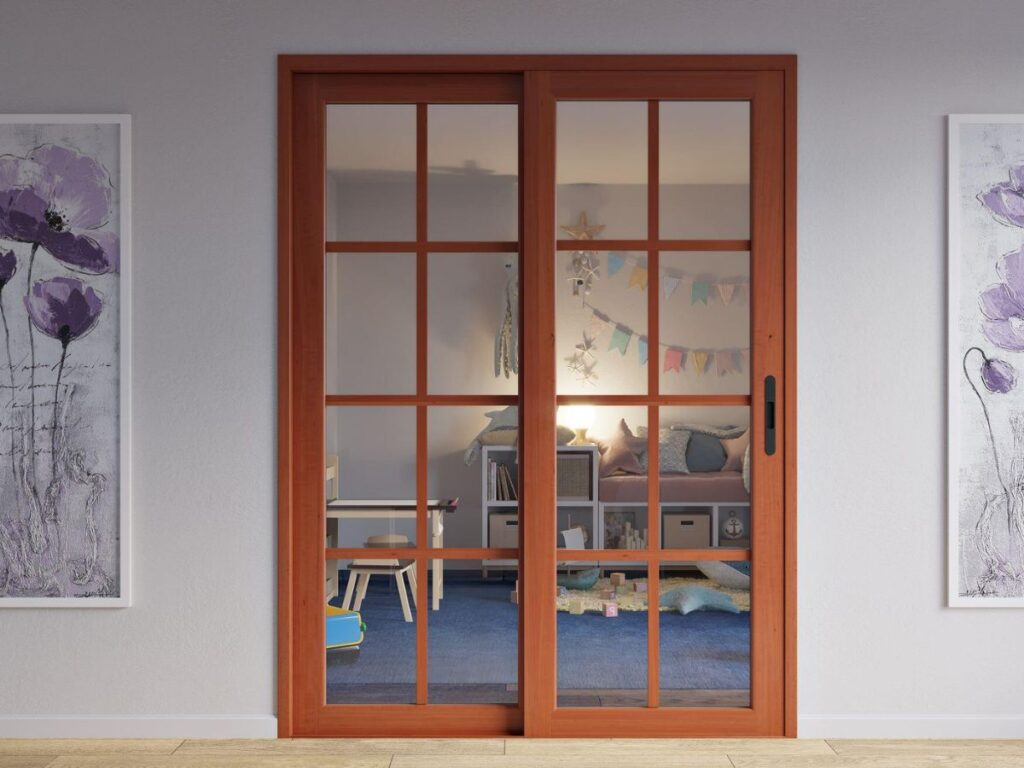
10. Bi-Fold Doors for Courtyard or Pool Areas
Bi-fold doors stand out because of how they transform a space. Instead of opening on a hinge like a standard door, the panels fold and slide neatly to the side. Suddenly, what was once a solid wall becomes an open connection between indoors and outdoors. In villas with courtyards, patios, or pools, this makes everyday living and entertaining much more fluid.
Key Design Features
- Folding Panel System: Panels are connected with hinges and fold to one or both sides. This setup allows for wide openings that traditional doors can’t achieve.
- Flexible Configurations: Can be designed with several panels, depending on the space available. Larger walls can accommodate more sections, creating a dramatic effect.
- Framing Choices: Offered in aluminum, timber, or composite frames. Each option influences the overall style and upkeep requirements.
Best Fit For
- Villas With Outdoor Entertainment Areas: Links living spaces to gardens or pool decks with ease. Guests can move in and out without barriers.
- Warm or Mild Climates: Keeps the home open to fresh air during most of the year. The design works best in regions where outdoor living is common.
- Large Wall Openings: Enhances wide façades by creating uninterrupted views. Smaller spaces may not take full advantage of the effect.
Pros
- Expansive Openings: Makes interiors feel larger by visually extending them outdoors. This effect is especially valuable in social areas.
- Versatile Operation: Panels can be partly opened or fully folded away. The flexibility makes them practical for both small gatherings and large events.
- Design Adaptability: Complements different architectural approaches. A timber frame feels traditional, while aluminum leans more modern.
Cons
- Higher Installation Cost: Requires skilled fitting and strong hardware. Poor installation can create alignment issues over time.
- Maintenance of Tracks and Hinges: Dirt, sand, or rust can interfere with movement. Regular cleaning and checks are necessary to keep them smooth.
- Space for Stacked Panels: Panels need room when folded back. This can limit furniture placement near the opening.
Installation and Maintenance Tips
- Use Quality Hardware: Strong hinges and corrosion-resistant tracks are worth the investment. They directly affect how smoothly the doors perform.
- Keep Tracks Clean: Wipe or vacuum tracks monthly to prevent buildup. In coastal settings, rinsing with fresh water helps reduce salt damage.
- Lubricate Moving Parts: Hinges and rollers benefit from a silicone-based lubricant applied twice a year. This keeps them quiet and functional.
- Seal Against Weather: Inspect weatherstripping often and replace when worn. Proper sealing prevents drafts, moisture, and unnecessary energy loss.
Final Thoughts
Bi-fold doors are a practical way to blur the line between inside and outside living. They create impact by turning walls into wide, usable openings. However, they deliver their best performance when chosen with the right frame, installed by skilled hands, and maintained with steady care.
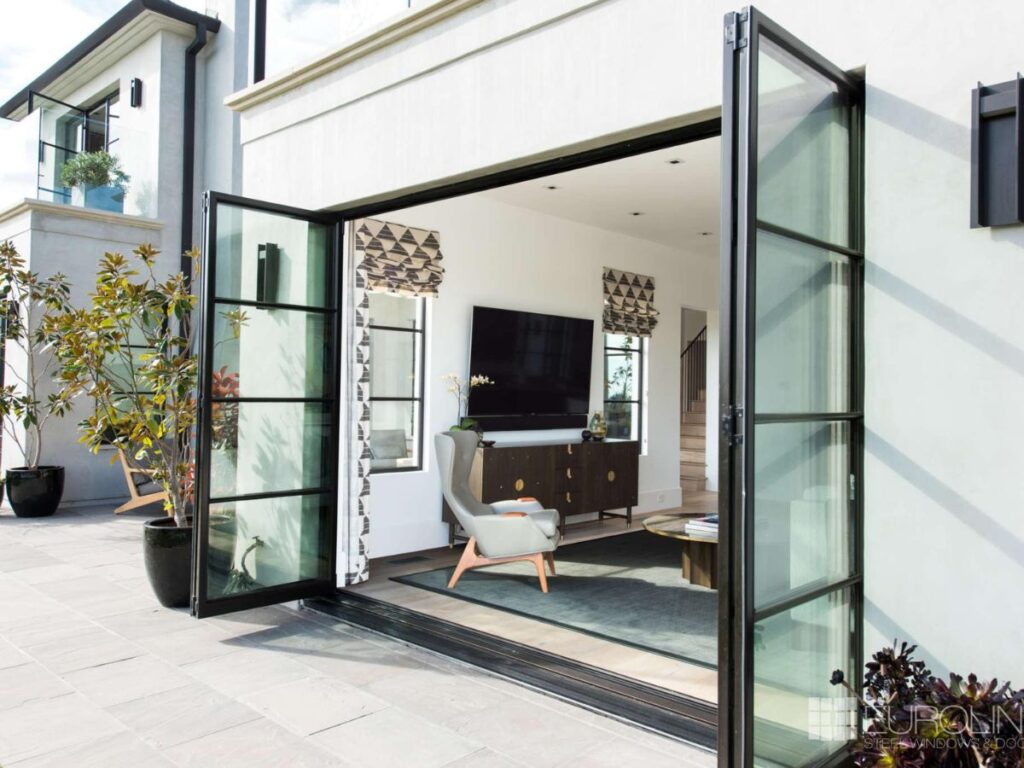
Final Tips Before You Choose Door Designs for Your Villa
Choosing a door for your villa can feel overwhelming. With so many styles, materials, and details to consider, it’s easy to lose focus on what truly fits your home.
- Match the Architecture: Pair the door style with the home’s design. A carved wood door suits a traditional villa, while a flush or pivot style fits a modern build.
- Consider Local Weather: Choose materials that perform well in your climate. In coastal or rainy areas, aluminum and teak are more resistant to damage.
- Think About Daily Use: Match the door’s build to how often it will be opened. Heavy traffic areas benefit from sturdy frames and durable hardware.
- Evaluate Light and Space: Glass doors brighten smaller rooms and connect them to outdoor views. Solid doors create privacy and reduce light where needed.
- Ask for Physical Samples: View the material and finish in natural light before deciding. This helps avoid surprises that can happen when ordering from photos.
- Balance Style and Function: Choose a design that works for both looks and practicality. A beautiful door that doesn’t suit your lifestyle will quickly become frustrating.
- Plan for Maintenance: Understand the upkeep each material needs. Some finishes require yearly attention, while others stay looking fresh with minimal care.
Your villa’s door is more than an entry it’s part of the first impression. If you’re unsure where to begin, Vallisco can guide you with proven options that fit both your vision and your practical needs. With the right advice, finding a door that feels at home is much simpler than it seems.
Conclusion
Remember the customer who chose that modern door for their classic villa? It didn’t work but that moment taught me something important.
The right door isn’t just about style. It’s about fit. Function. Feeling. You’ve just seen 10 villa door designs that can shape your home from the inside out.
So now it’s your turn.
Walk through your space. Think about what you want it to feel like.
Contact Vallisco today and let’s find a door that makes sense for you.
Recommended Reads for You
Interested in more? Here are some additional articles with insights and tips to keep you informed:
Still haven’t found what you’re looking for? Don’t hesitate to contact us. We’re available around the clock to assist you.



